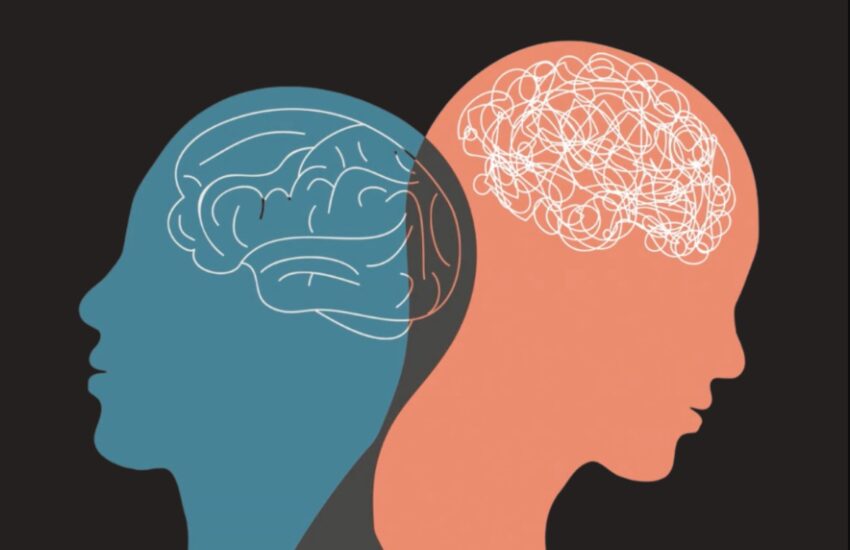Manic or hypomanic episodes, which almost invariably are preceded or followed by depressive spells. An individual who is going through a manic episode has a noticeably heightened, euphoric, and expansive mood, which is frequently broken up by sporadic outbursts of acute anger or even violence—especially when other people don’t agree with the manic person’s plans and desires.
This diagnosis can only be made if these dramatic mood swings have lasted for at least a week. In addition, at least three other symptoms must appear simultaneously. Additionally, there must be a sizable impairment in social and vocational performance, and hospitalization is frequently required during manic episodes. Hypomanic episodes are also possible; they last at least 4 days and feature lesser variations of the same symptoms. Although both manic and hypomanic episodes share the same symptoms, hypomania causes significantly less impairment and does not necessitate hospitalization.
Bipolar are two types bipolar (I and II)
An individual experiencing their first bout of mania is said to have bipolar I disorder, single manic episode. In people who have experienced recurring mood episodes, the remaining criteria sets are utilized to describe the nature of the current (or most recent) episode.
Bipolar II Disorder (Recurrent Major DepressiveEpisodes with Hypomanic Episodes)
A. Having experienced one or more major depressive episodes in the past.
B. Having experienced at least one hypomanic episode in the past.
C. Neither a manic episode nor a mixed episode have ever occurred.
D. Schizophrenia, Schizophreniform Disorder, Delusional Disorder, or Psychotic Disorder Not Otherwise Specified do not better explain the mood symptoms A and B, nor are they overlaid on them.
E. The symptoms hinder social, vocational, or other critical areas of functioning or produce clinically substantial distress.
Manic Episodes
Extremely high energy levels are a hallmark of manic episodes. It’s possible for someone to require less sleep and eat less. They could think they can do a lot of things at once when multitasking. Typically, a person going through a manic episode would have racing thoughts and even speak quickly on a range of subjects in a short period of time. While having this much energy can feel amazing and make one feel “on top of the world,” it also makes one more likely to make risky choices like binge drinking, giving away money, or engaging in unsafe sex. Additionally, they might feel more anxious or irritable.
Depressive disorder
Depressive episodes are characterised by intervals of profound melancholy, a sense of hopelessness, or excessive concern. A person may experience sleep issues while experiencing a depressed episode (either sleeping too much or not enough). Weight gain and an increase in hunger are frequent. Talking slowly, having difficulties focusing, and feeling incapable of finishing chores or doing anything at all are common symptoms of depressive episodes. A person typically loses interest in activities they ordinarily enjoy when they are depressed. They typically have lack interest in sexual activity or other pleasurable activities. They might have high suicide or death-related thoughts.
Mixed episodes
When a person is experiencing a manic or depressive episode, they are said to have mixed features, which are the coexistence of high and low symptoms that happen concurrently or as part of a single episode. The majority of bipolar disorders involve long-term mood swings between high and depressed states. A person with mixed characteristics exhibits signs of both emotional “poles”mania and depression—concurrently or quickly.
Causal Factors
Biological Causal Factors
• Genetics influences
• Neurochemical factor
• Abnormalities of hormonal regulatory system
• Neurophysiological and neuroanatomical influence
Psychological casual factors
• Stressful life events
• Sociocultural differences
• Demographic differences
Treatments
Pharmacotherapy
Mood-stabilizing, antipsychotic, and antidepressant medications are all used to treat unipolar and bipolar illnesses.
Electroconvulsive therapy
is used with patients with severe depression who may be at immediate and substantial danger of committing suicide, especially those who have psychotic or melancholic characteristics. Patients who are unable to take antidepressants or who have another drug resistance can also utilise it.
Transcranial magnetic stimulation (TMS)
The advantage of TMS is that it doesn’t impair memory or cognitive function—in fact, in certain situations, it might even enhance it.
Cognitive behavioural therapy
Cognitive-behavioural therapy is one of the two most popular psychotherapies for unipolar depression with established efficacy. It is a relatively quick style of therapy (often 10 to 20 sessions) that concentrates on immediate issues as opposed to the more distant cause issues that psychodynamic psychotherapy frequently tackles.
Behavioural activation treatment.
This treatmentapproach focuses on getting patients to becomemore active and engaged with their environment and withtheir interpersonal relationships.
The interpersonal therapy(IPT)
This therapy emphasis on regulating everyday social rhythms that, if they become unstable, may contribute to the onset of bipolar episodes, IPT has been modified for the treatment of bipolar disorder. Patients are trained to detect the impact of interpersonal events on their social and circadian rhythms and to regularise these rhythms as part of this novel treatment, known as interpersonal and social rhythm therapy. If you are searching for Therapist near me connect with TalktoAngel an online counselling platform.
